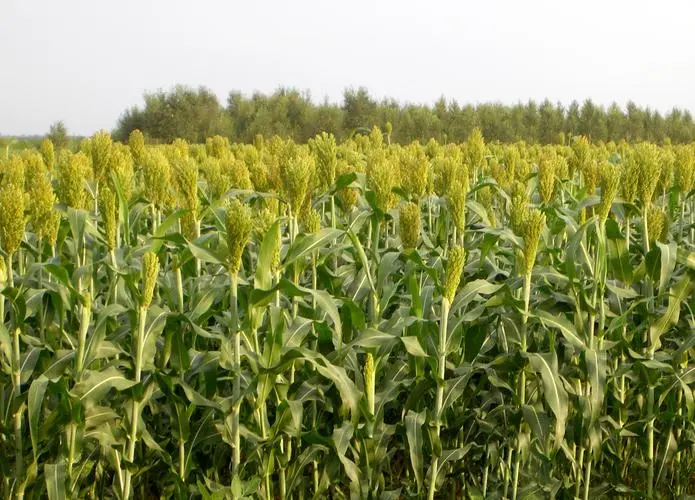Crop growth requires calcium. Calcium is one of the 17 nutrients necessary for plant growth. Since crops have a moderate demand for it, it is classified as a medium element.

The role of calcium
Crop growth needs calcium. Calcium is one of the 17 essential nutrients for plant growth. Since crops have a moderate demand for it, it is classified as a medium element.
Farmers use chemical fertilizers to add nitrogen, phosphorus, and potassium to their crops. But they rarely add calcium. This lack causes calcium deficiency in crops, leading to problems.
The main role of calcium in crop growth
Adjust soil pH
Long-term use of chemical fertilizers leaves a lot of acid in the soil. This occurs after crops absorb nitrogen, phosphorus, and potassium from fertilizers. These acid ions replace a large amount of hydrogen ions, causing soil acidification. Also, as crops grow, their roots secrete organic acids. These acids also make the soil more acidic. Calcium is a metal ion. It is alkaline and can neutralize soil acid. It can also neutralize the secretions from the roots’ organic acids. This stabilizes the root environment. It stops various harmful bacteria from infecting roots and causing disease.
Promote fruit development and prevent fruit cracking
In agriculture, many crops like tomatoes, apples, and grapes have cracked fruits. It’s caused by a lack of calcium. Calcium is a key part of crop cell walls. It can promote the division of outer cells. This improves the toughness and thickness of the fruit skin. So, it speeds up skin growth. This avoids the problem of fruit cracking from skin not keeping up with flesh growth.
Prevent premature aging of crops
The growth of crops is affected by various plant hormones produced in the body. Crops age prematurely because plants make ethylene too fast. This speeds up crop growth and causes early aging. Calcium can regulate plant cell membranes. It reduces ethylene synthesis in crops. This delays crop weakening and extends the crop fruiting period.
Symptoms of calcium deficiency
Calcium does not thrive in crops. It mainly moves through the process of leaf transpiration. When there is a shortage of calcium in the soil, it is easy to see signs of deficiency. I previously discussed the role of calcium in crops. When calcium is deficient, the following symptoms will primarily appear.
Causes disease to occur
The most common problem with calcium deficiency in crops is fruit cracking. For example, grapes, pomegranates, tomatoes, and others will have cracks in their skins. This happens in the middle and late stages of growth. At the same time, the crops’ disease resistance weakens. This leads to the occurrence of various diseases. Apples get a bitter pit disease. Vegetables get leaf scorch. Tomatoes get chloasma.
Slow crop growth
Calcium has poor mobility in crops, so it easy to identify calcium deficiency in new leaves. Once new leaves lack calcium, they will grow slowly, turn yellow, curl, and in severe cases, dry up and fall off. Crops require growth hormones from new leaves to thrive. It regulates the absorption of the root nutrients. When new leaves grow abnormally, it affects the absorption of root nutrients. This causes a problem with slow crop growth.
Decreased crop yield and quality
The lack of calcium hurts crop photosynthesis. This also stops roots from taking in nutrients. This makes the crops becoming weak and aging prematurely. Calcium is key in fruit skin cells. A lack of it can cause thin stems and weak seeds. For fruit trees, it makes the trees weak. The rate that they turn nutrients into fruit is slowing. The fruit cracks and falls. And, the commercial rate greatly drops.
According to the production process of calcium fertilizer, it is divided into the following categories
According to the calcium fertilizer production process is divided into the following categories.

1. Burnt calcium fertilizer includes quicklime and slaked lime. They are made by burning limestone, dolomite, oysters, and clam shells. The main component is calcium oxide, with a content of 35-90%.
2. This type of fertilizer is biological calcium. It is made by crushing shrimp and crab shells, and animal bones. Its main part is calcium carbonate. It has 25-30% calcium oxide.
3. These fertilizers are made by chemists. They contain calcium: superphosphate, calcium chloride, and calcium nitrate. They are 20%, 48%, and 30% calcium oxide respectively.
4. Chelated calcium fertilizer is made from sugar, alcohol, calcium, and calcium nitrate. Sugar alcohol chelates calcium. Its main function is to move calcium ions quickly. It achieves rapid calcium supplementation. The calcium oxide content is generally greater than 16%. It can be used for foliar spraying.
5. This is a marine active calcium fertilizer. It uses biotechnology to take calcium, magnesium, and other trace elements from shrimp and crab shells. It is rich in nutrients such as amino acids, fatty acids, and oligomeric acids. Calcium exists as ions. It can be directly transported through plant phloem. It is absorbed well and has complete nutrition. Representative products include marine calcium, which is patented and produced by Guanfa Technology. Calcium ions sprayed on the leaves can be directly absorbed. The leaves, fruits, etc. can use them.
Considerations for choosing calcium fertilizer
1. Choose calcium fertilizers according to soil conditions. For example, lime can add calcium to acidic soil. Gypsum can add calcium to an alkaline soil.
2. For spraying leaves, choose chelated calcium or marine active calcium fertilizers. Do not use artificial calcium fertilizers or burned ones. They will burn the leaves and harm the plants.
3. The quality of calcium fertilizers does not depend on the calcium content. “The key to calcium supplementation lies in absorption.” Plants only absorb ionic calcium. Other compound calcium fertilizers need to be split into ions. Plants can absorb ions.
How to supplement calcium scientifically
Now, there are many calcium fertilizers. They include common lime and gypsum. Also, it contains sugar and alcohol. It also contains superphosphate, calcium nitrate, and calcium chloride. It also contains lime, nitrogen, and calcium hydroxide. In practice, how should we choose them to give crops calcium? Knowing the cause of calcium deficiency helps us pick products. It also tells us their purpose. We should use these to add calcium to crops.
1. Calcium deficiency caused by soil deterioration
Nowadays, we use chemical fertilizers all year. This use leads to soil acidification and compaction. In this case, a large amount of calcium in the soil is adsorbed and fixed by the soil as a stable
The state is combined. Crops cannot absorb it. It causes calcium deficiency. This is true in the process of growing greenhouse vegetables. This situation is more common.
In view of this situation, we should choose quicklime for calcium supplementation. Spreading 40-60 kilograms of quicklime per mu of land can add calcium to the soil. It can also balance the soil’s acidity and increase its effective calcium. This reduces calcium deficiency. Also, when using fertilizers, use more calcium magnesium phosphate. Also, use calcium nitrate, superphosphate, and other products. They can add nitrogen, phosphorus, and potassium for crops. They also add some calcium for the soil.
2. Foliar spraying for calcium supplementation
There are critical periods and maximum nutrition periods for crop absorption of nutrients. Demand for a certain element is high in these two periods. Calcium moves poorly in the crop. During these times, the roots can’t absorb enough calcium. This can lead to calcium deficiency during fruit expansion. In this case, we should choose foliar spraying. It adds calcium for crops through leaves. Sugar alcohol calcium can be used during the young fruit stage and expansion stage of the fruit.
3. Increase the effective calcium content of the soil
Many soils have enough calcium. But, the soil makes it stable and the roots can’t absorb it. This causes calcium deficiency. In usual fertilization, we should use organic and biological fertilizers. Adding organic fertilizers and helpful microorganisms increases the soil’s aggregate structure. This structure can absorb many calcium ions for crops. This stops the soil from making the ions solid. This increases the usable calcium and reduces calcium deficiency.
4. Reasonable watering
The transport of calcium in crops depends on the transpiration of leaves. When the soil is dry, weak transpiration can also cause calcium deficiency. Therefore, field management should be strengthened in agricultural production. Watering in time during droughts can increase soil humidity. This helps crops absorb calcium and prevents calcium deficiency.
